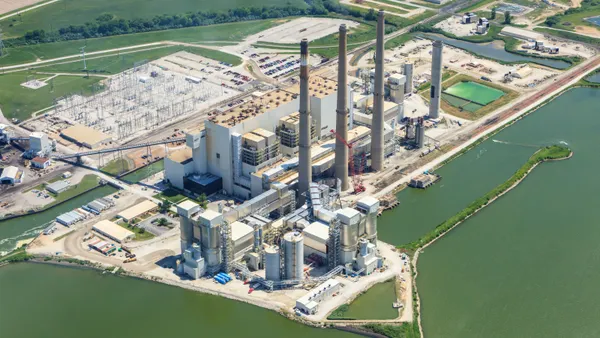Dive Brief:
- PPL Corp. has set an emissions reduction goal that looks out more than three decades and which will require the utility company to eliminate its Kentucky coal fleet and improve efficiency in its U.K. and United States operations.
- PPL, which owns two utilities in Kentucky, says it will reduce carbon dioxide emissions by 70% from 2010 levels by 2050.
- Last year, PPL shareholders urged the company to assess its exposure to climate-related issues, and the resulting analysis predicted large declines in emissions would be driven by market forces, rather than regulation and law.
Dive Insight:
It's been eight months since PPL shareholders voted in favor of a non-binding proposal that calls for the company to take a hard look at how climate change and emissions issues could impact the business. Since then, the company has developed emissions reductions goals and said it expects most of its coal fleet to be mothballed by 2050.
Investor focus on climate change policy has been growing in recent years, and the PPL vote last year was reportedly the first in the power sector.
Now the company is targeting a 70% reduction by 2050, more than three decades away. But PPL's Kentucky utility companies own power plants, with coal making up more than 60% of their generation in 2016. PPL says it "will likely economically retire the bulk of their coal-fired units." About 10% may remain online.
In the last eight years, PPL has cut its carbon dioxide emissions by nearly half, in part due to the sale of almost 4,000 MW of coal-fired generation owned by its competitive generation business, while retiring an additional 900 MW. Much of that has been replaced with natural gas.
In November, PPL announced plans to shutter two older coal-fired units in Kentucky totaling more than 270 MW. Louisville Gas and Electric and Kentucky Utilities have already mothballed a half dozen units in as many years.
In addition to slashing its coal fleet, PPL also plans to reduce greenhouse gas emissions at its substations through leak detection sensors, monitoring and proactive equipment replacements. Efficiency measures, both in the United States and U.K., will focus on improving energy efficiency at its facilities; and transitioning to a cleaner fleet of trucks and vehicles.














